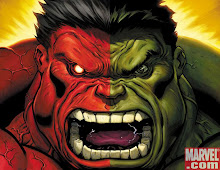
Pulp icon Doc Savage returns with his own series right out of the recent pages of First Wave. Many may not know who exactly Doc Savage is, but this could be the place to start, especially because this book has one thing that many books are lacking now-a-days, blimps.
The Good They don't call him "The Man of Bronze" because he has some sort of metallic like skin. Doc Savage is an incredibly smart and insanely rich man with no super-powers. He's like me or you, with a tan and a better haircut. I love how he interacts with the people he's saving. There's no ego, and he never shows any inkling that he feels he's better than them. He's a normal guy, trying to save the world... and he's got a blimp. Writer Paul Malmont makes this feel like a pulp book with updated art. There's a decent enough of exposition going on, but not enough to make you really take notice. There's a great cliffhanger ending that gets me pumped for the next issue.
The Bad As much as I liked this book, there's a bit more bad than good. If you don't know who Doc Savage is, check out his ComicVine page and read up a little because this book doesn't offer much of an explanation of who he is or what he can do. This caters to mainly the Doc Savage fans out there. My major problem with the main story, because there is also a Justice, Inc back-up, is the eyes. They're anime-huge, and it's very distracting. I also wish the WHOLE issue could have been about Doc Savage because the back-up was something I did not like at all. I have no clue what Justice Inc is, and the art bored me. Doc Savage is an action-packed story, and the back-up was a bunch of people hanging out and talking. If Justice Inc wants to be a back-up, do it somewhere else. It's too hard to read after you just witnessed Doc Savage saving people and jumping out of a blimp.
The Verdict If you like Doc Savage, you'll love this book. If you've never heard of him, I say give this book a chance, but skip the Justice Inc in the back. The 20 pages of Doc Savage are great, action-packed, and it is a pretty quick read. The back-up story is just not anything that interesting at the moment. It's hard to grade a first issue of a series. It's the one that's going to draw people into the book, but I feel they may have dropped the ball on getting new people into Doc Savage. I'll make my final verdict on this book by issue #3.
The Good They don't call him "The Man of Bronze" because he has some sort of metallic like skin. Doc Savage is an incredibly smart and insanely rich man with no super-powers. He's like me or you, with a tan and a better haircut. I love how he interacts with the people he's saving. There's no ego, and he never shows any inkling that he feels he's better than them. He's a normal guy, trying to save the world... and he's got a blimp. Writer Paul Malmont makes this feel like a pulp book with updated art. There's a decent enough of exposition going on, but not enough to make you really take notice. There's a great cliffhanger ending that gets me pumped for the next issue.
The Bad As much as I liked this book, there's a bit more bad than good. If you don't know who Doc Savage is, check out his ComicVine page and read up a little because this book doesn't offer much of an explanation of who he is or what he can do. This caters to mainly the Doc Savage fans out there. My major problem with the main story, because there is also a Justice, Inc back-up, is the eyes. They're anime-huge, and it's very distracting. I also wish the WHOLE issue could have been about Doc Savage because the back-up was something I did not like at all. I have no clue what Justice Inc is, and the art bored me. Doc Savage is an action-packed story, and the back-up was a bunch of people hanging out and talking. If Justice Inc wants to be a back-up, do it somewhere else. It's too hard to read after you just witnessed Doc Savage saving people and jumping out of a blimp.
The Verdict If you like Doc Savage, you'll love this book. If you've never heard of him, I say give this book a chance, but skip the Justice Inc in the back. The 20 pages of Doc Savage are great, action-packed, and it is a pretty quick read. The back-up story is just not anything that interesting at the moment. It's hard to grade a first issue of a series. It's the one that's going to draw people into the book, but I feel they may have dropped the ball on getting new people into Doc Savage. I'll make my final verdict on this book by issue #3.













